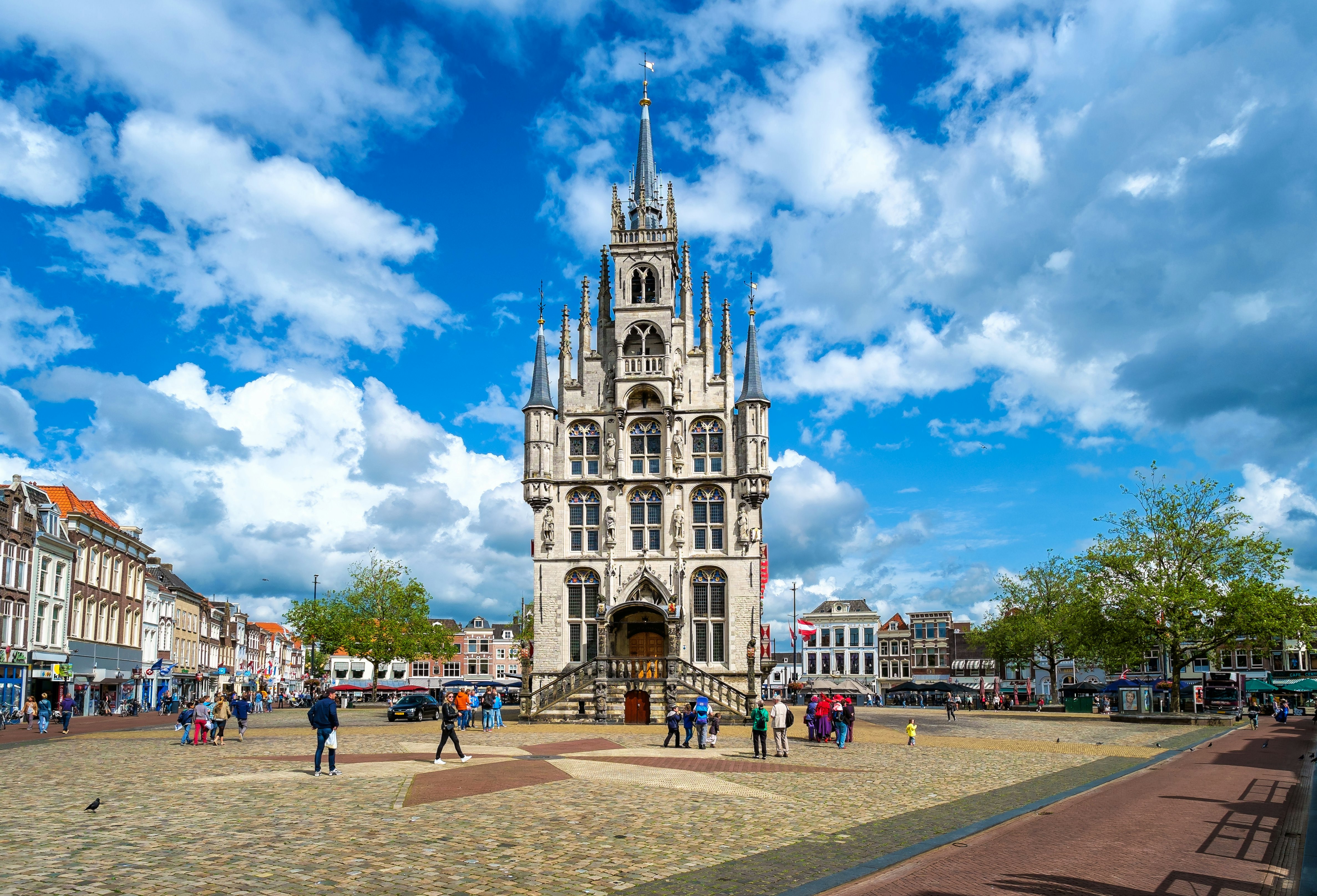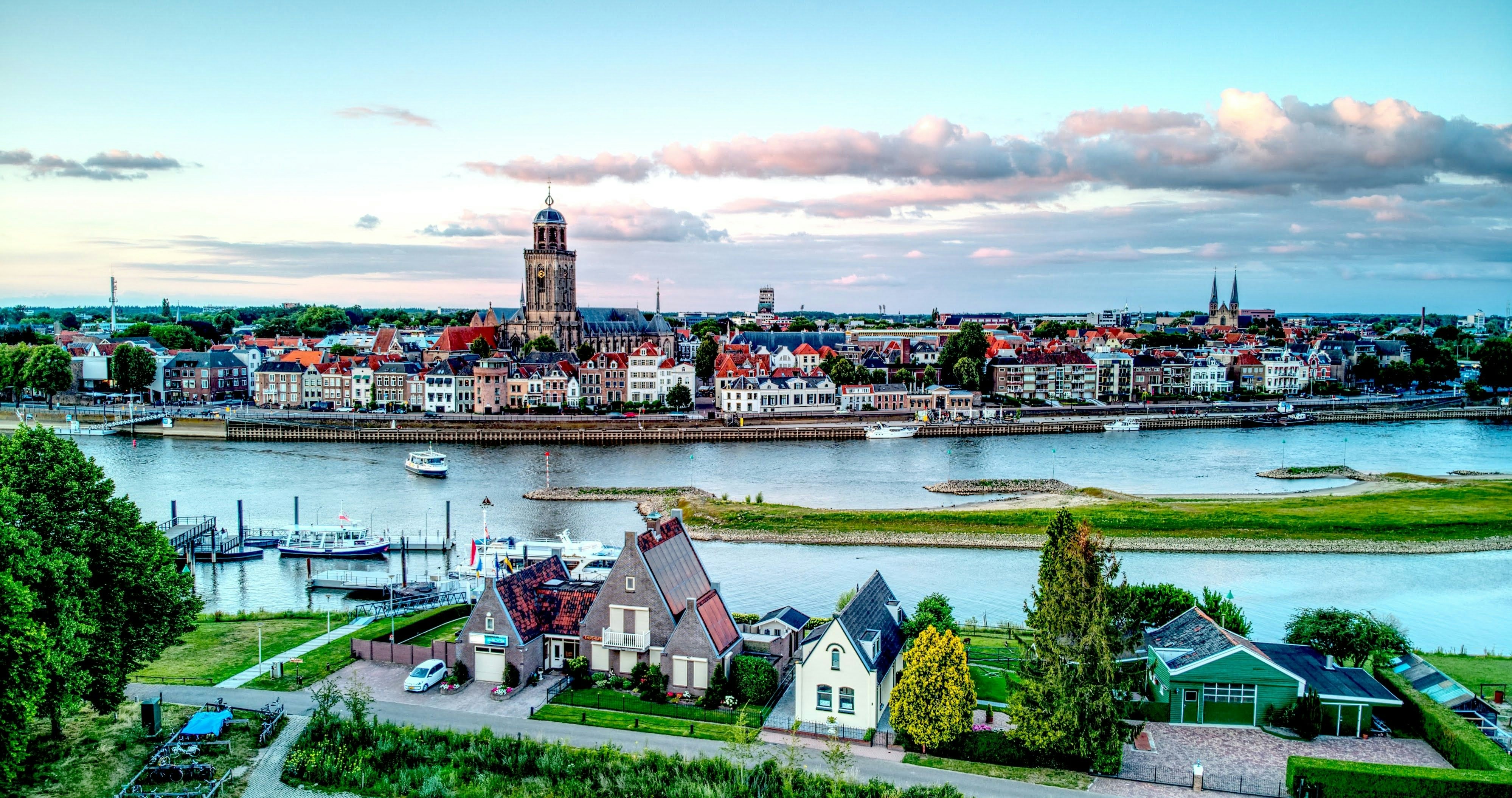

Explore more of the Netherlands by car (or bike) with these top driving routes © Karl Hendon / Getty Images
Beyond the Netherlands’ biggest and best-known cities, a patchwork of farmland, fields, villages and towns laced by canals, polders, dykes and windmills unfolds across the flat, low-lying Dutch landscapes.
These road trips will give you a taste of the Netherlands’ exquisite scenery, age-old traditions and ingenious innovations. With state-of-the-art roads, driving is an ideal way to make spontaneous stops and discoveries. The country’s short distances and extensive cycling paths offer the option to hop off or even swap out the car completely and travel these routes by bike.
Ready to explore the Netherlands? Here are the places that should be on your agenda

1. Through the bulb fields
Best road trip for colorful photo ops
Haarlem–Leiden; 64km (40 miles); allow one day
Time it right to travel through a kaleidoscope of color on this glorious route, which takes in the best of the Bollenstreek bulb-growing region. Leaving the cobbled streets and gabled buildings of Haarlem, you’ll soon pass open fields and flower farms. On the northwestern edge of pretty Lisse, the Keukenhof Gardens put on showstopping displays of blooms (some 7 million) during spring.
Throughout the year, you can visit Keukenhof’s castle gardens free of charge, and find out more about the Netherlands’ national flower at Lisse’s Museum De Zwarte Tulp (Museum of the Black Tulip). Turning west takes you to coastal Noordwijk, with its white-sand dunes roamed by fallow deer, foxes, speckled green sand lizards and a cacophony of birdlife. From here, it’s a half-hour drive south to historic Leiden, hometown of Rembrandt as well as the Hortus Botanicus Leiden, the Netherlands’ oldest botanic gardens.
Planning tip: Tulip season runs from around mid-March to mid-May, when the Keukenhof Gardens are open (book tickets in advance). This route is also lovely during the dahlia flowering season from mid-August to mid-October. Check the Bollenstreek’s flower map to see what’s in bloom, and for flower fields that you can enter (the map also flags production fields, which you can capture from outside instead).
Want to explore the tulip fields by bike? Here's how to do it

2. The Dutch cheese route
Best road trip for cheese lovers
Gouda–Alkmaar; 126km (78 miles); allow one to two days
Feast on delectable Dutch cheese along this route linking the Netherlands’ trio of historic cheese towns.
Charming, canal-woven Gouda has been the center of the surrounding valley’s cheese trade since the Middle Ages. A recreated cheese market takes place in front of the historic waag (weighing house) weekly in spring and summer. If you miss it, you can learn about Gouda’s cheese history at its interactive Cheese Experience.
North past lush pastures and the spinning windmills of traditional working village Zaanse Schans, swing by the former fishing village of Volendam, with cheese producers that you can visit on its southern edge. Endearingly kitschy old-time attractions like traditional Dutch national costume dress-ups line Volendam’s boat-filled waterfront. Just north again, Edam is a treasure with cobbled streets, hand-operated drawbridges, and warehouses (in its 17th-century heyday, there were over three dozen shipyards here). Discover production techniques and taste samples at Edam’s cheese purveyors, and/or catch the town’s engagingly re-enacted weekly summer cheese market.
A half-hour-or-so drive northwest through classic polder landscapes, Alkmaar was awarded weighing rights after repelling occupying Spanish troops in 1573 by opening the locks and flooding the area with seawater. It too holds a recreated cheese market weekly in spring and summer, when porters bring in cheeses for inspection by white-smocked dealers then whisk them off to be weighed. A refreshing place to finish is the Nationaal Biermuseum in the old De Boom brewery, with a canal-side tasting room.
Detour: To sample sheep and goats milk cheeses at producer Kaasboerderij Wezenspyk on the bucolic island of Texel, continue some 40 minutes north of Alkmaar to port town Den Helder and catch a 20-minute car ferry (prebook in high summer).
Pick the right time for your visit to the Netherlands with our seasonal guide

3. Hanseatic League route
Best road trip for medieval architecture and history
Doesburg–Elburg; 138km (86 miles); allow one to two days
Hanseatic history lingers in the medieval streets along the Netherlands’ eastern river, the IJssel. Back when Amsterdam and Rotterdam were still small villages, these nine historically linked cities were part of the powerful league of northern European merchant guilds and market towns, which dominated trade from the 13th to the 15th centuries.
Begin in fortified Doesburg, famed for mustard that’s been produced and traded here since 1457 (mustard soup is a local speciality) and the Netherlands’ oldest public house and one-time weighing house, the 1478 Stadsbierhuys de Waag. Pass through apple orchards and strawberry farms en route to Zutphen (aka Torenstad, the “town of towers”) and on to Deventer, with its striking Gothic hall-church built between 1450 and 1525. Head to Hattem, then splendid Zwolle, bounded by a star-shaped canal and city walls. Travel through maize fields and dairy pastures to Hasselt and on to Kampen’s ensemble of medieval gates, houses and towers, on the lower reaches of the IJssel.
End your journey in Elburg, with its small, square-shaped historic center. This fortified former fishing town once sat on the shoreline of the Wadden Sea, before the early 20th-century construction of the Netherlands’ longest dyke, the 32km (20 mile) Afsluitdijk, creating the freshwater IJsselmeer lake. Across the water at the lake’s southern end lies the Netherlands’ newest province, Flevoland, reclaimed in the 1950s and ‘60s.

4. On the trail of Van Gogh
Best road trip for art lovers
Zundert–Hoge Veluwe National Park; 195km (121 miles); allow one to two days
Once you’ve seen the world’s greatest collection of Vincent Van Gogh’s works at Amsterdam’s Van Gogh Museum, it’s rewarding to delve deeper into the artist’s early life and works on this pilgrimage through varied and little-visited countryside.
Start in Zundert, where Vincent was born on March 30, 1853 and spent his earliest years. Vincent’s father was a vicar at Zundert’s squat, red-brick Dutch Reformed church – look for the bronze monument of Vincent and his brother Theo out front. Zundert hosts the world’s largest flower parade on the first Sunday of September. A 20-minute drive north through fields ablaze with dahlias in late summer is the town of Etten-Leur, where Vincent had his first studio; the Van Gogh Church here highlights his artistic beginnings and holds a copy of the 1881 document first registering him as an artist.
Approaching Eindhoven’s rural northeastern edge, amid crop fields of maize, sugar beets and potatoes, is the small village of Nuenen. It’s here that Vincent began producing art in earnest. Appearing in several of his works are the Opwetten Watermill (now a restaurant) and 1884-built De Roosdonck (still a working windmill). Nuenen’s Van Gogh Roosegaarde cycle path twinkles after dark like his iconic starry nights.
Flower and fruit farms and forested nature reserves skirt the edge of Arnhem to this trip’s showpiece. Within the rambling Hoge Veluwe National Park, amid sculpture-studded gardens, the Kröller-Müller Museum's exceptional collection of Van Gogh’s works is second in the world only to his eponymous museum in Amsterdam.

5. Friesland’s Elfstedentocht (Eleven cities tour)
Best road trip for getting off the beaten track
Leeuwarden–Leeuwarden; 225km (140 miles); allow two days
Part of Frisian tradition for centuries, the 1909-founded Elfstedentocht ice-skating tour along frozen canals, rivers and lakes is the world’s largest on natural ice. These days it holds near-mythical status, as it’s only able to take place when the ice is thick enough, which is increasingly rare due to the warming climate. The last tour was 1997 but hopes remain high every year. This driving loop traces its route as it takes in all 11 of Friesland’s historic cities.
From the provincial capital Leeuwarden, with its Roman heritage and herringbone brick streets, travel through green polder grassland grazed by black-and-white Holstein-Friesian cattle to Sneek, guarded by its fairy-tale early 17th-century defensive gate the Waterpoort. Next up is IJlst, followed by the moated, fortified city of Sloten. Continue to windswept Stavoren on the shores of the IJsselmeer lake, then Hindeloupen, with its narrow streets, wooden bridges and sea captains’ houses. Travel to Workkum and onward to Bolsward. From Harlingen on the Wadden Sea, continue past fields of wheat, potatoes and flax to reach Franeker and Dokkum, before wrapping up back in Leeuwarden.
Detour: Along the Friesland coast, across the Wadden Sea’s UNESCO World Heritage-listed intertidal zone of mudflats, the crescent-like chain of Frisian Islands can be accessed by ferry from Harlingen.
















